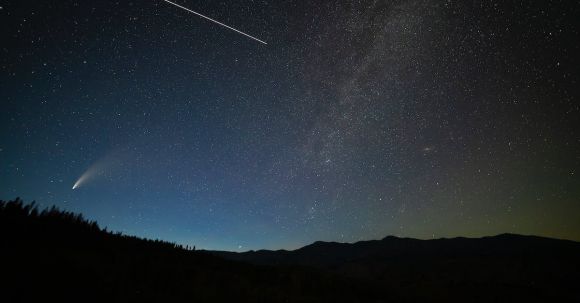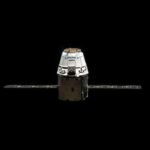Asteroids and comets are two fascinating celestial objects that have captured the imagination of scientists and the public alike. While they may appear similar at first glance, there are several key differences between asteroids and comets that set them apart. In this article, we will explore these differences and gain a deeper understanding of these intriguing bodies.
What are Asteroids?
Asteroids are rocky objects that orbit the Sun. They are remnants from the early days of our solar system, formed from the leftover material that did not coalesce to form planets. Most asteroids are found in the asteroid belt, a region located between the orbits of Mars and Jupiter. However, some asteroids can be found in other regions of the solar system as well.
Composition and Structure
Asteroids are primarily composed of rock and metal, with some even containing small amounts of water and organic compounds. They vary in size, ranging from small boulders to objects several hundred kilometers in diameter. Their irregular shapes are a result of collisions and impacts over billions of years.
Characteristics and Behavior
Asteroids are generally considered to be dormant objects. They do not have a coma or tail like comets do, and their orbits are usually more circular. Some asteroids, known as near-Earth asteroids, have orbits that bring them close to Earth. These asteroids can pose a potential threat if they were to collide with our planet.
What are Comets?
Comets are icy bodies that also orbit the Sun. They are often referred to as “dirty snowballs” due to their composition of ice, dust, and organic materials. Comets originate from the outer regions of the solar system, such as the Kuiper Belt and the Oort Cloud.
Composition and Structure
Comets are composed of a solid nucleus, which is surrounded by a coma and a tail. The nucleus is made up of ice and dust, and can range in size from a few kilometers to tens of kilometers in diameter. As a comet approaches the Sun, the heat causes the ice to vaporize, creating a glowing coma of gas and dust around the nucleus. The solar wind then pushes this material away from the Sun, forming a tail that can extend for millions of kilometers.
Characteristics and Behavior
Comets are known for their spectacular displays when they come close to the Sun. As the ice vaporizes, it releases gas and dust, creating a bright coma and a tail that can be visible from Earth. Comets have highly elliptical orbits, which means they spend most of their time in the outer regions of the solar system and only approach the Sun occasionally.
Conclusion
In conclusion, while asteroids and comets are both celestial objects that orbit the Sun, they have distinct differences in composition, structure, and behavior. Asteroids are rocky and metal-rich, with more circular orbits and no coma or tail. Comets, on the other hand, are icy bodies with highly elliptical orbits, and they exhibit the characteristic coma and tail when they approach the Sun. By studying and understanding these differences, scientists can gain valuable insights into the formation and evolution of our solar system.





